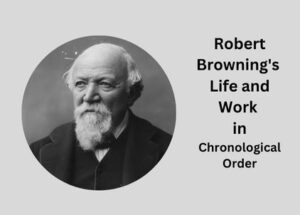Biographical Sketch of Kate Chopin (Catherine O’Flaherty)
Catherine O’Flaherty was born in St. Louis, Missouri, on February 8, 1851.
Her father, Thomas O’Flaherty, was an Irish immigrant who became a prosperous merchant.
Chopin’s father, Thomas, had one son, George, who was 4 years old when his mother died. Thomas O’Flaherty needed a wife to care for his young son, and within months, he married a young Creole woman, Eliza Faris, who was 23 years younger than her very practical older husband. Thomas and Eliza O’Flaherty had several children including Kate.
Chopin’s father, Thomas died in a bridge collapse in 1855.
Kate was raised by women mainly—her mother, grandmother, and great-grandmother. Her mother’s sisters also lived in their household of women. The influence of her Irish father disappeared, and Kate’s personality was formed, in large part, under the authority of Creole women.

Kate’s education was guided by her great-grandmother, Victoire Charleville, who insisted that the child must be educated in the style of a proper French woman. This education included lessons in French and music, both of which young Kate mastered very well. When she was 7 years old, Kate was finally enrolled in a Catholic day school, the same school where she had been sent at age 5 by her father.
When Kate was 13, her great-grandmother died.
One month later, her most beloved older half-brother, George, who had joined the Confederate Army, died of typhoid fever.
Chopin attended the St. Louis Academy of the Sacred Heart, where she read copiously, learned to play the piano, became fluent in French, and passionately supported the Confederacy during the Civil War.
She read and admired the works of Jane Austen, the Brontë sisters, George Eliot, and George Sand. Kate remained at the Sacred Heart Academy for several years, even though the school was forced to close intermittently during the years of the Civil War.
Chopin became more interested in literature and storytelling. She graduated from the academy in 1868.
Kate was described not only as beautiful but also as clever and honest.
In 1870 she married Oscar Chopin, a twenty-five-year-old cotton trader, New Orleans native, and Creole.
Unfortunately, in 1882, Kate’s husband died after contracting swamp fever (probably malaria). At 31, Kate was a widow with six small children.
Oscar’s death left Kate Chopin without an income and in serious debt. She tried to run Oscar’s many business interests, but eventually, had to auction much of the property to settle the estate’s debts.
However, within two years, Kate had paid her husband’s debts and was managing to support and raise her children without assistance.
In 1883, Kate left Cloutierville and moved back into her mother’s home in St. Louis. Within a year, Kate’s mother was dead, and Kate moved into her own home.
In 1888, Kate Chopin published a short story, “Lilia. Polka for Piano,” in a local newspaper. She went on writing short stories. Some of these stories include “Story of an Hour” (Vogue, 1894) and “Tante Cat’rinette” (Atlantic, 1894). These stories focused on women
She also began a novel. She took writing as her career.
There was a market for stories about the New Woman: a single, professional woman who had created a life separate from the traditional role of wife and mother. Kate has so many friends within the New Woman Society.
Chopin’s first novel, At Fault, was published in 1890 at her own expense after she failed to find a publisher.
During the 1890s Chopin wrote more than one hundred short stories. Chopin based her stories on the locations and on the people she knew best. The locales for her stories are St. Louis, New Orleans, and Cloutierville— all towns in which she had lived. The characters in her writings are the inhabitants of these towns. Chopin paid attention to the people and to the events that went on around her and portray the details in her work.
Her articles, poems, and stories were published in Atlantic Monthly, Criterion, Harper’s Young People, Vogue, and the St. Louis Post-Dispatch.
Her books include At Fault (1890), Bayou Folk (1894), and A Night at Acadie (1897). In 1899 Chopin published her final novella, The Awakening. The setting for The Awakening is based on Kate and Oscar’s staying in New Orleans and summered in Grande Isle.
The book caused a critical furore. The public condemned her candid treatment of a young married woman’s sexual and spiritual awakening. But at the same time, it was a huge success.
Kate Chopin died from a cerebral hemorrhage, on August 22, 1904.



